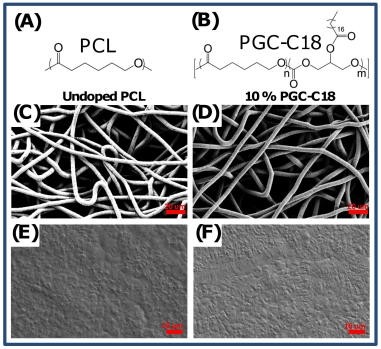Gel that releases drugs in vivo could replace implants, say researchers
In the Stanford University study, titled Drug Release from Electric-Field-Responsive Nanoparticles, the team loaded fluorescent tracer into the “smart material” based on conductive-polymer nanoparticles, before injecting it into mice.
The conductive hydrogel – a liquid solution which turns to gel at body temperature, fixing it at the target – works when the nanoparticles are charged, and so the drug diffuses through the hydrogel into its surroundings.
Unlike previous wave stimulated targeted delivery methods like electronic reservoirs, which require surgery, or other smart materials that often require complex equipment to activate a release, the investigators say the gel can be set-off using an external weak current.
A current so weak, it could be generated using an AA battery.
“Although many materials that deliver drugs in response to ultrasound, light, and magnetic signals have been developed, activating these materials typically requires the use of large or specialized equipment,” the team – led by Stanford department of chemistry’s Richard Zare – reported.
“Electrical signals, on the other hand, are easy to generate and control. To our knowledge, such an in vivo approach has not been previously reported.”
Furthermore the study found the gel broke down within the animals’ bodies without any side effects after two months.
Power to the people
Zare et al also envision the human body as a power source for the technology.
In the paper, the researchers suggest that intrinsic electronic activity in the pacemaker cells, as well as in the brain could emit a current that – though weak – could be enough to activate the nanoparticles.
The study states: “One can also envision clinical application for the programmed drug delivery that is coupled to presence of weak electric fields in vivo. Specifically, tissues with naturally occurring electric fields can couple substance release and drug delivery to electrical activity within the tissue.
“In cardiovascular tissue engineering, intrinsic electrical activity of the pacemaker cells (sinoatrial node) can cause specific encapsulated substance to be released rhythmically with each pulse.
“Similarly, neuronal tissue with intrinsic weak electric fields can stimulate particular neurotransmitter release enclosed within the nanoparticles that is coupled with electrical activity within regions of the brain.”
Of the applications of the release system, the team suggest pain relief requiring dosage at a periodical time, and for anticancer therapy where a tumor cannot easily be removed by surgery.
“This approach is facile and minimally invasive for potential medical application,” said Zare. “It represents a new electric-field-responsive drug delivery system that we suggest has excellent spatial and temporal control.”












